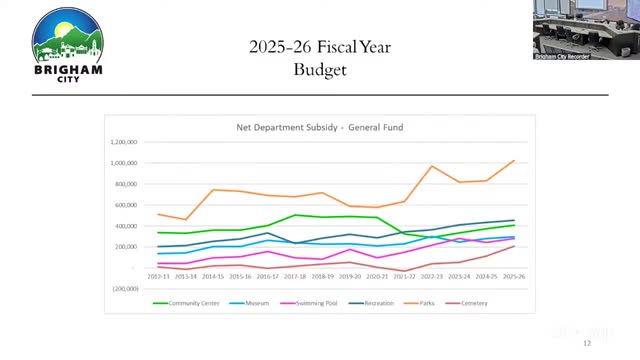Brigham City invests utility funds to enhance community services and quality of life
May 03, 2025 | Brigham City Council, Brigham City, Box Elder County, Utah
Thanks to Excel Chiropractic and Scribe from Workplace AI , all articles about Utah are free for you to enjoy throughout 2025!

This article was created by AI using a video recording of the meeting. It summarizes the key points discussed, but for full details and context, please refer to the video of the full meeting. Link to Full Meeting
City leaders expressed gratitude for the utility fund, noting that without it, the financial burden would likely fall on property taxes, impacting citizens directly. The discussion emphasized the significance of these departments, particularly during tight budget periods when such services are often at risk of cuts. Officials stressed the need to protect these resources, as they play a crucial role in enriching community life.
The recreation department was specifically mentioned for its role in youth development, providing opportunities for children to engage in team sports and learn valuable life skills. Additionally, the cemetery services were highlighted, especially in light of neighboring Perry City lacking its own burial site, which forces residents to seek more expensive options elsewhere.
The city museum's recent exhibits, including a notable display on Japanese internment camps, were also praised for their cultural significance and community engagement. While these services may not generate sufficient revenue to cover their costs, they offer invaluable benefits that extend beyond financial metrics, such as fostering community connections, promoting wellness, and preserving local history.
The meeting concluded with a reaffirmation of the city's commitment to investing in these vital community services. By allocating taxpayer resources thoughtfully, Brigham City aims to ensure that all residents have access to opportunities for recreation, learning, and connection, regardless of their age or income. This approach reflects a broader understanding that community infrastructure encompasses not only roads and public safety but also the spaces and services that foster a sense of belonging and pride among residents.
Converted from 2025-26 budget presentation meeting on May 03, 2025
Link to Full Meeting
Comments
View full meeting
This article is based on a recent meeting—watch the full video and explore the complete transcript for deeper insights into the discussion.
View full meeting
